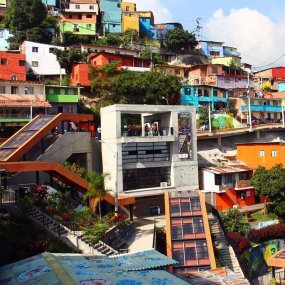At the beginning of the 20th century, Medellín was the industrial center of Colombia with several factories settled in the city.
Between the 70s and 80s Medellín experienced one of its darkest periods with the drug trafficking phenomenon that dominated the most vulnerable communities. However, reality has changed now. Social innovation was one of the bets the city made to improve the life quality of citizens.
In 1991, with the drafting of the new constitution, actions were focused on strategic plans translated into education investment, innovation and social inclusion problems
Among the mega projects of the city, the Massive Transport System metro was one of the meaningful landmarks for the city, the pride of the ”Antioqueños”. Later, it articulated with the metro-cable, the metro-plus, the tram, bike paths and the escalators in the 13 commune which changed the face of a neighborhood in front of the world.
Another bet that the city made to create a change in culture was the System of Public Libraries of Medellin and the Articulated Life Units (UVAs) which work with public institutions, organizations and are now centers of citizen transformation that meet different needs.
The best evidence of change are the sites that have experienced the transformation of the city. The Palacio de la Cultura Rafael Uribe Uribe is now a national monument in Plaza Botero, the Paseo Junín Pedestrian meeting center before the creation of shopping centers, the House of Memory Museum that shows the complexity of the conflict that marked the country and the city.
Enjoy with us a tour of the most representative places of the city and live the transformation of the city of eternal spring.
Contact us: Info@feelmedellin.com
3008381253
